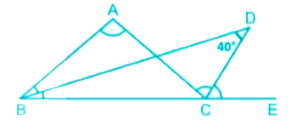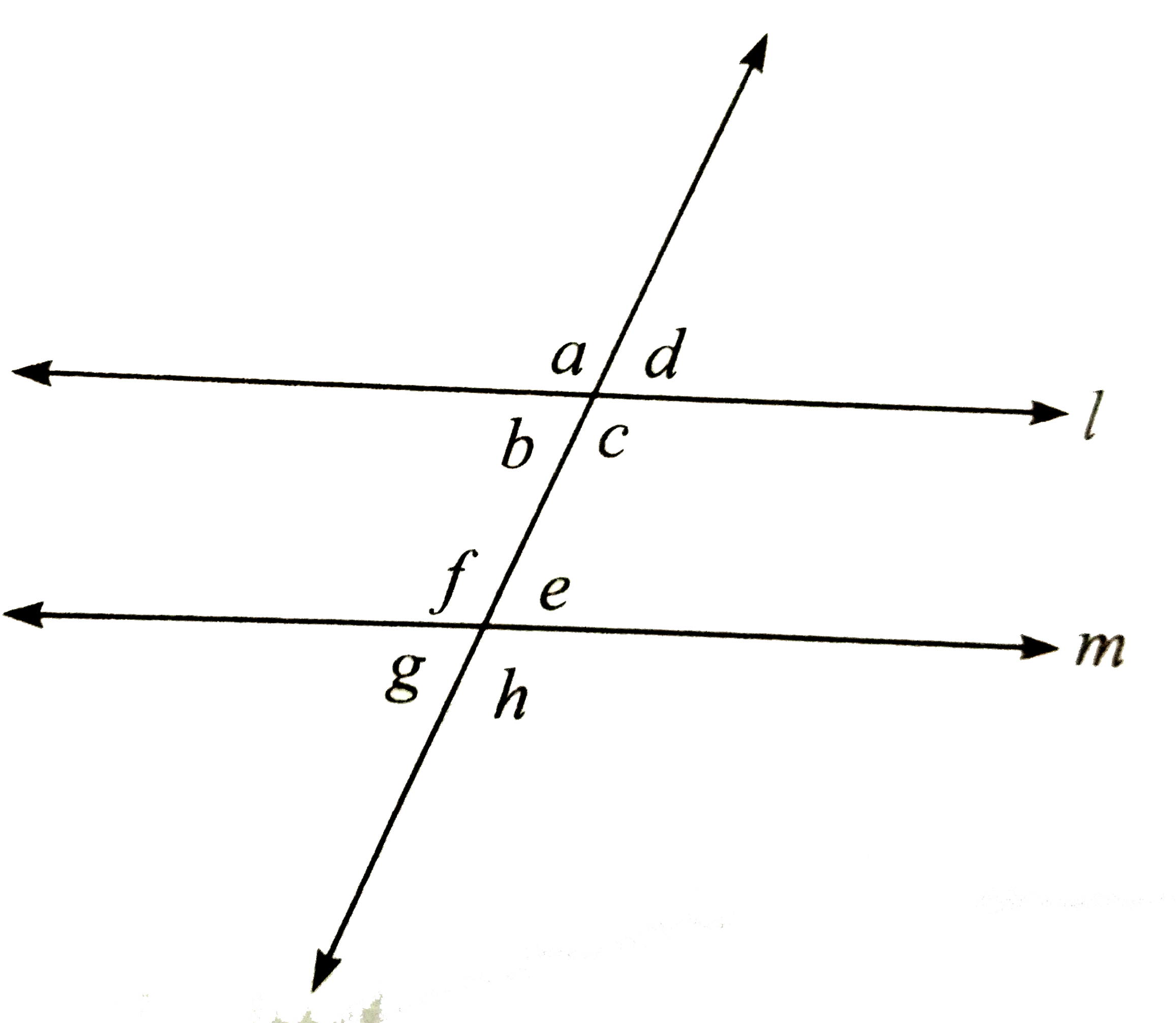A student when asked to measures two exterior angles of ABC observed that the exterior angles at A and B are of 1030 and 740 respectively. Is this possible? Why or why not?
To determine whether the observed exterior angles of triangle ABC at points A and B are possible, we can follow these steps:
Step 1: Understand the relationship between exterior and interior angles
The exterior angle of a triangle is equal to the sum of the two opposite interior angles. Additionally, each exterior angle is supplementary to its adjacent interior angle. This means:
- Exterior angle at A + Interior angle A = 180°
- Exterior angle at B + Interior angle B = 180°
Step 2: Calculate the interior angles from the given exterior angles
Given:
- Exterior angle at A = 103°
- Exterior angle at B = 74°
Using the supplementary relationship:
1. For angle A:
Interior angle A=180°−103°=77°
2. For angle B:
Interior angle B=180°−74°=106°
Step 3: Apply the angle sum property of triangles
The angle sum property states that the sum of the interior angles of a triangle is always 180°. Therefore, we need to check:
Interior angle A+Interior angle B+Interior angle C=180°
We already have:
- Interior angle A = 77°
- Interior angle B = 106°
Let’s denote the interior angle C as x:
77°+106°+x=180°
Step 4: Solve for angle C
Combining the known angles:
183°+x=180°
Subtracting 183° from both sides gives:
x=180°−183°=−3°
Step 5: Analyze the result
An angle cannot be negative. Therefore, the assumption that the given exterior angles can correspond to a triangle is incorrect.
Conclusion
Since the calculated interior angle C is negative, it is not possible for the triangle ABC to have the given exterior angles of 103° and 74°.
---
The exterior angle of a triangle is equal to the sum of the two opposite interior angles. Additionally, each exterior angle is supplementary to its adjacent interior angle. This means:
- Exterior angle at A + Interior angle A = 180°
- Exterior angle at B + Interior angle B = 180°
Given:
- Exterior angle at A = 103°
- Exterior angle at B = 74°
1. For angle A:
Interior angle A=180°−103°=77°
Interior angle B=180°−74°=106°
The angle sum property states that the sum of the interior angles of a triangle is always 180°. Therefore, we need to check:
Interior angle A+Interior angle B+Interior angle C=180°
We already have:
- Interior angle A = 77°
- Interior angle B = 106°
77°+106°+x=180°
Combining the known angles:
183°+x=180°
Subtracting 183° from both sides gives:
x=180°−183°=−3°
An angle cannot be negative. Therefore, the assumption that the given exterior angles can correspond to a triangle is incorrect.
Since the calculated interior angle C is negative, it is not possible for the triangle ABC to have the given exterior angles of 103° and 74°.
Topper's Solved these Questions
Similar Questions
Knowledge Check
In a ΔABC, the sum of exterior angles at B and C is equal to:
A180∘−∠BACB180∘+∠BACC180∘−2∠BACD180∘+2∠BACIn a ΔABC,∠C in an obtuse angle . The bisectors of the exterior angles at A and B meet BC and AC produced at D and E respectively . If AB=AD=BE. Find ∠ACB .
A105∘B108∘C110∘D135∘Find the value of ∠A. If BD is an interior angle bisector of ∠B and DC is an exterior angle bisector of ∠C.
 A70∘B60∘C80∘D110∘
A70∘B60∘C80∘D110∘
In the figure , write the alternate exterior angle of ∠d and corresponding angle of ∠c .

View SolutionIn a ΔABC,∠C in an obtuse angle . The bisectors of the exterior angles at A and B meet BC and AC produced at D and E respectively . If AB=AD=BE. Find ∠ACB .
View SolutionIn a parallelogram ABCD , write the sum of angle A and B
View SolutionIn Δ ABC, m ∠ A = m ∠ B = 90∘, m ∠ C = 45∘. Is this triangle possible ? Why?
View SolutionIn a ΔABC, if the exterior angle of C is 135∘, then ∠A+∠B=_______
View Solution
